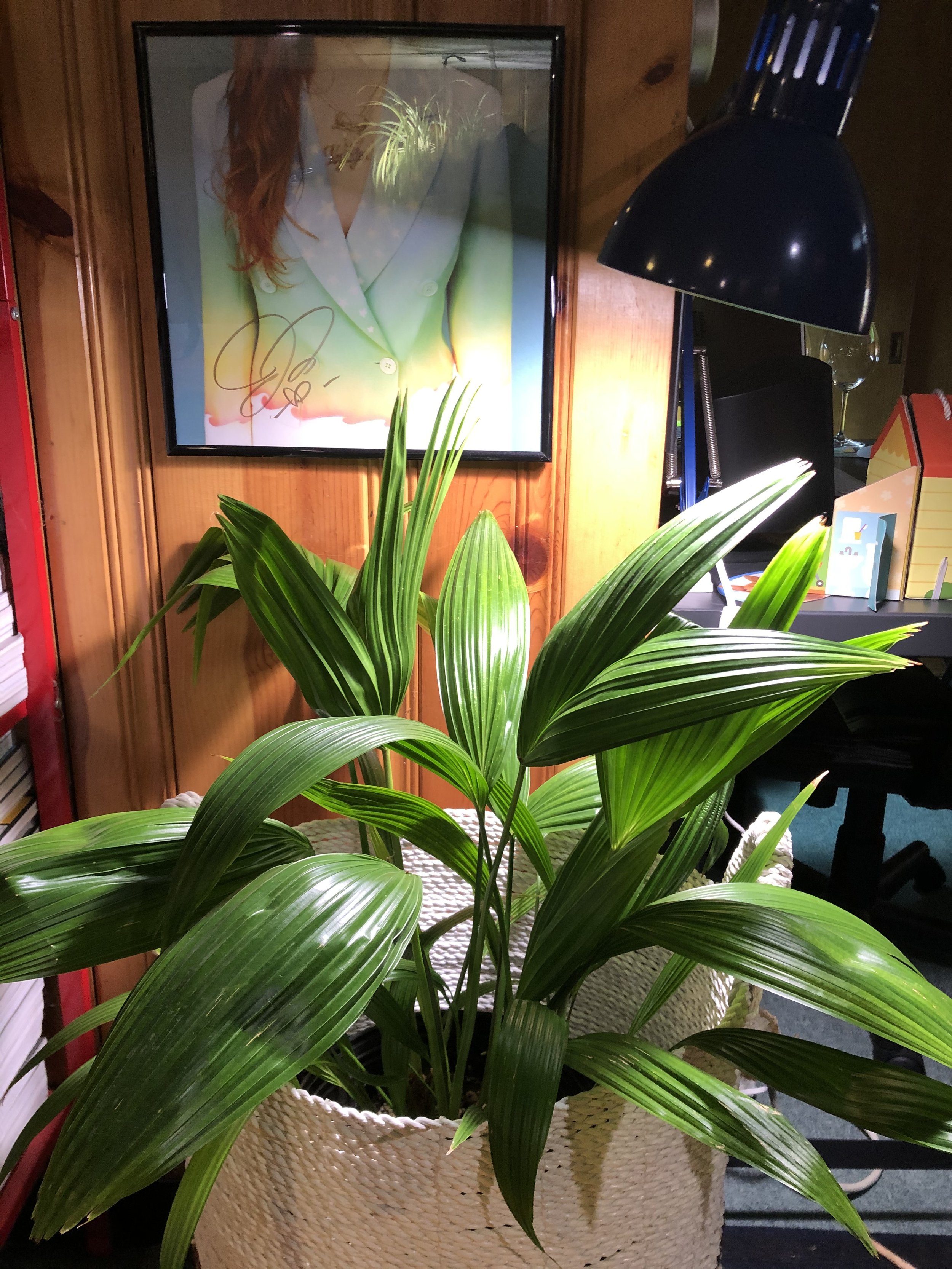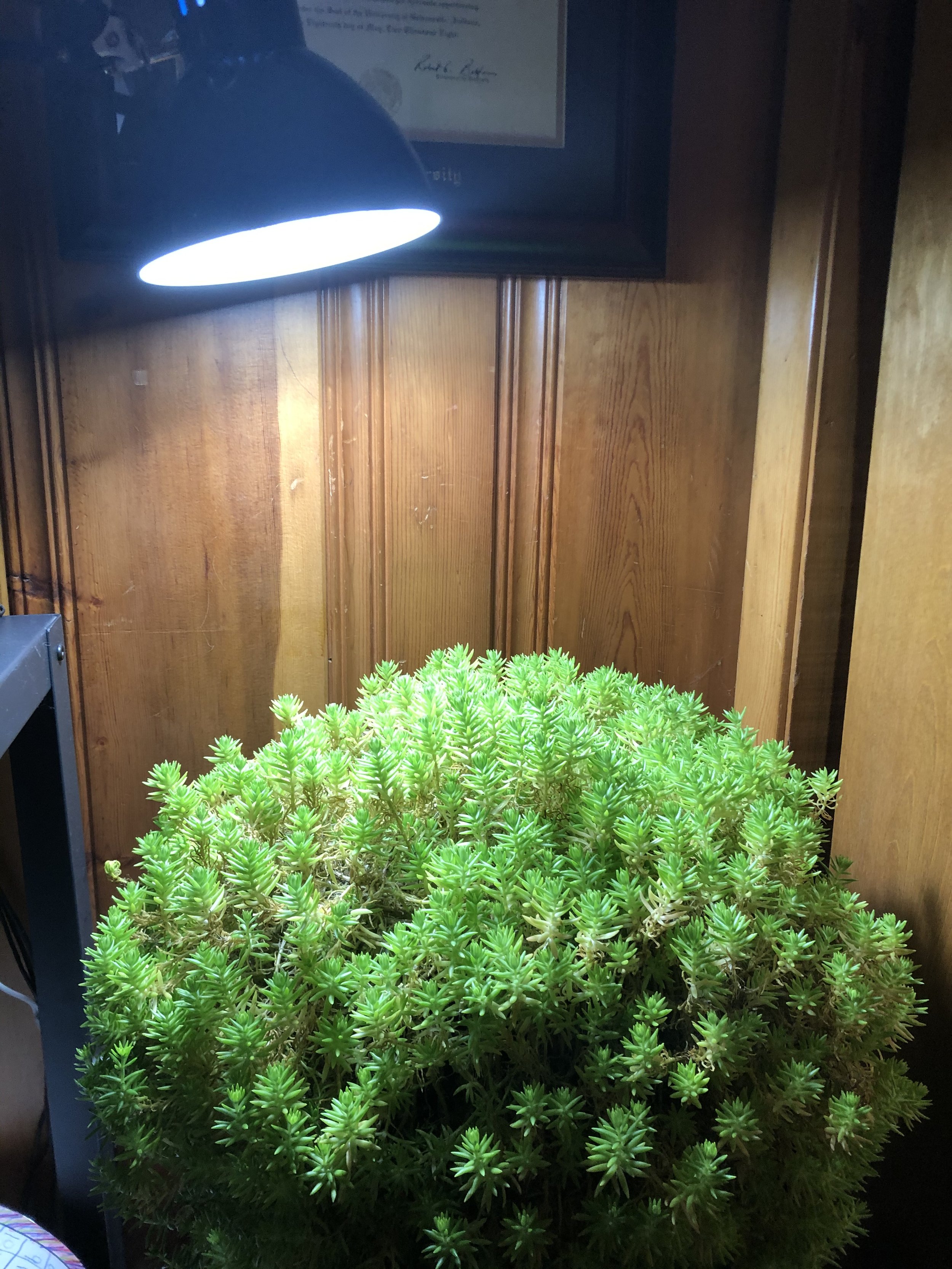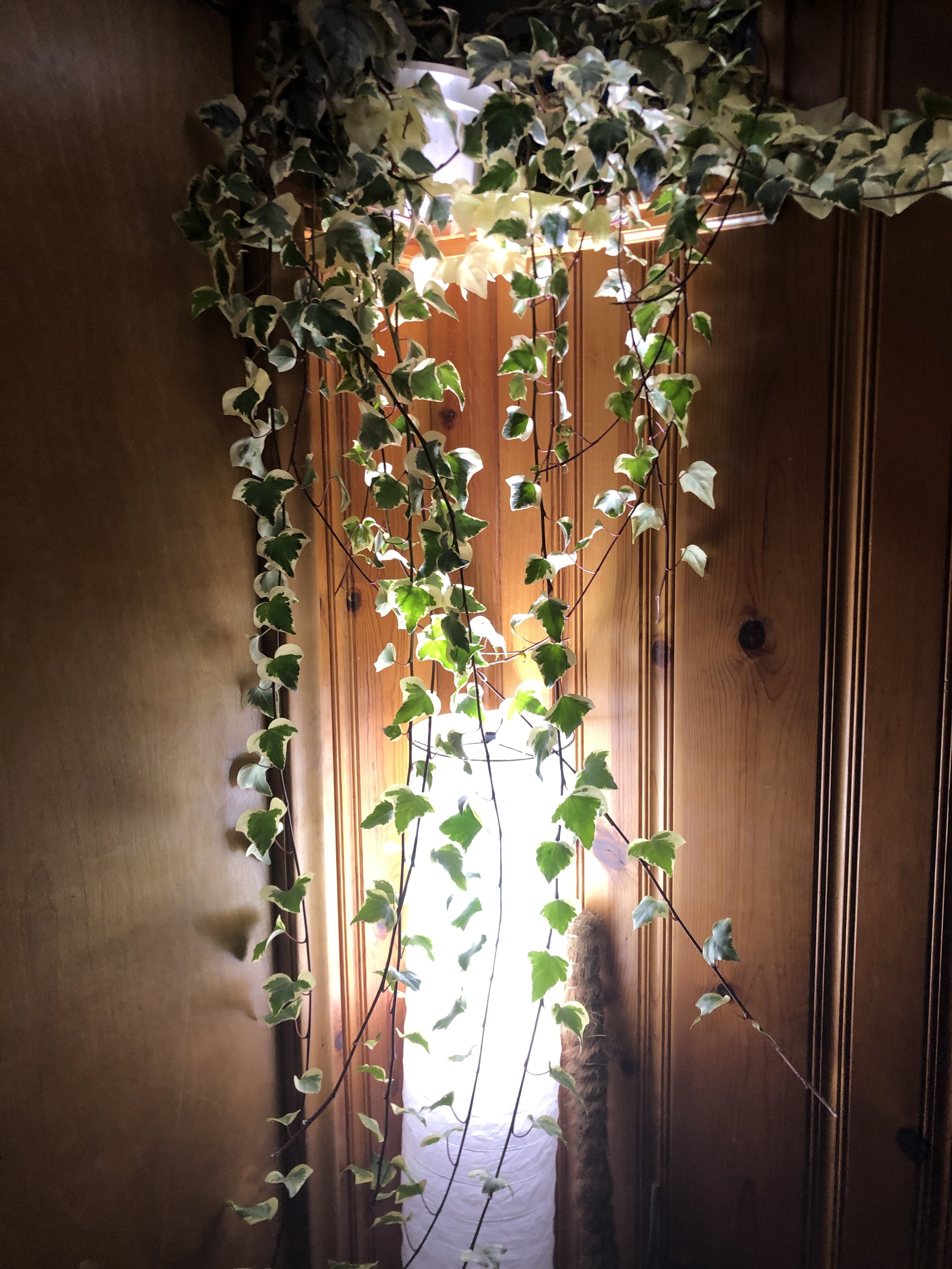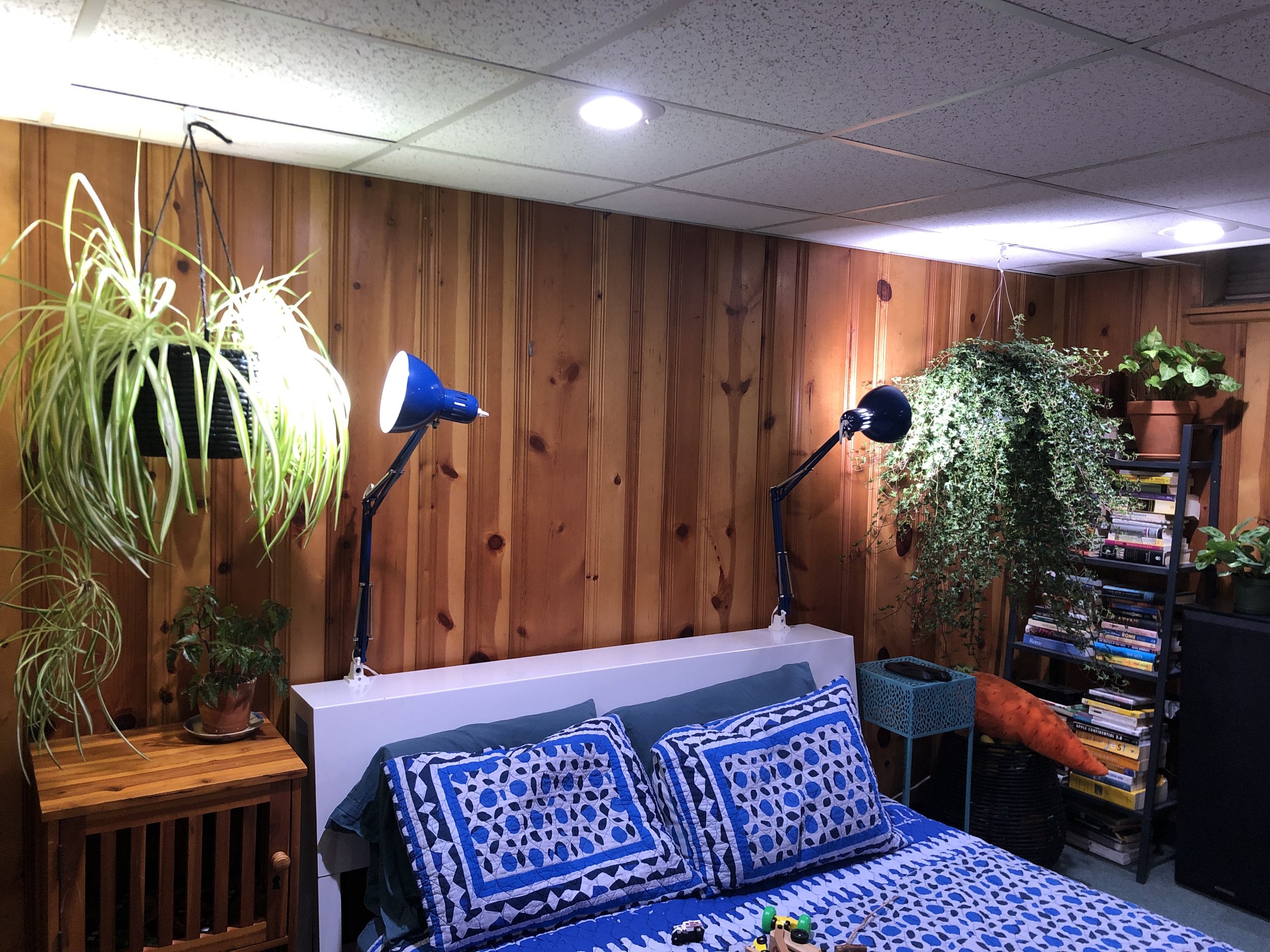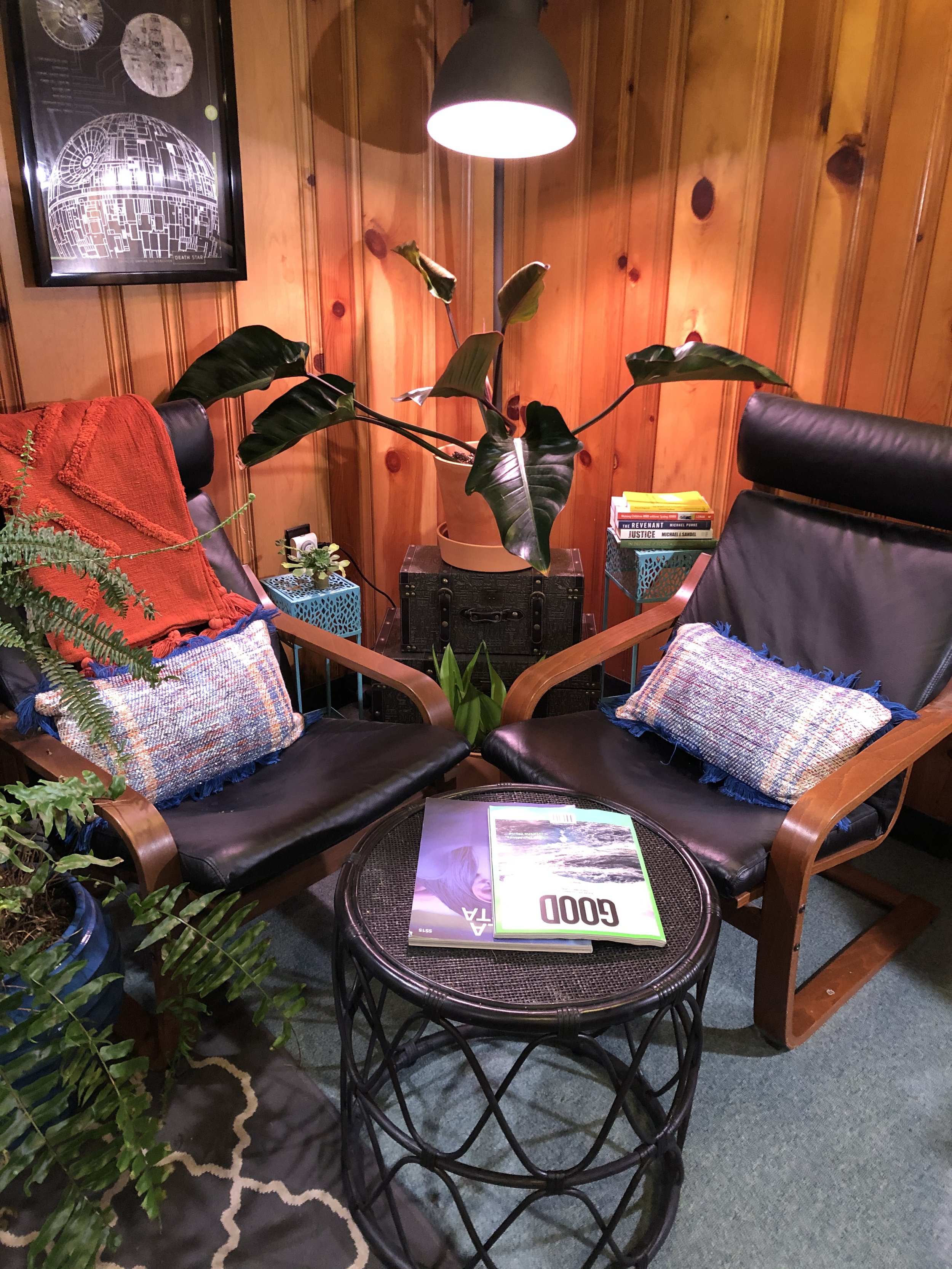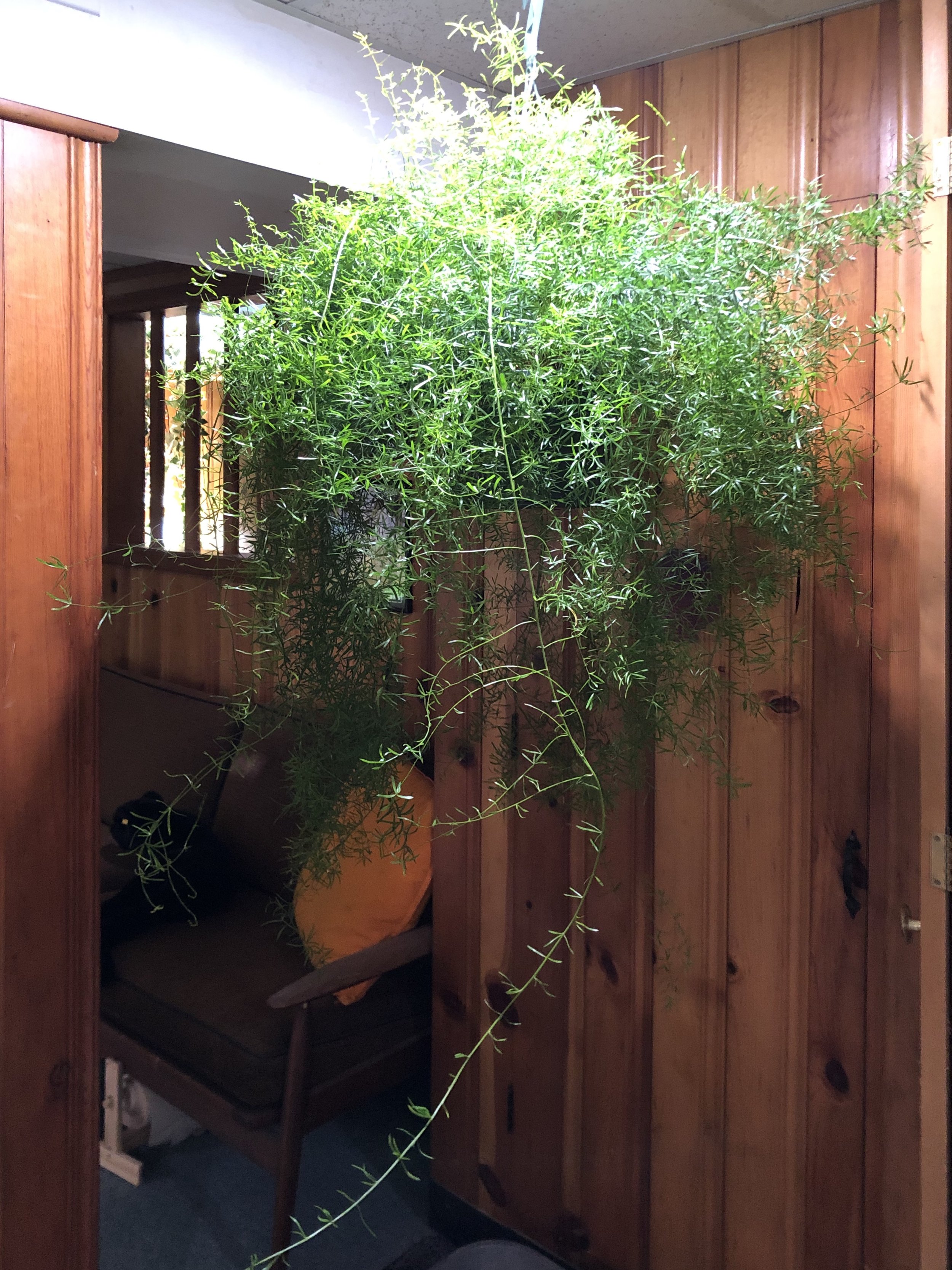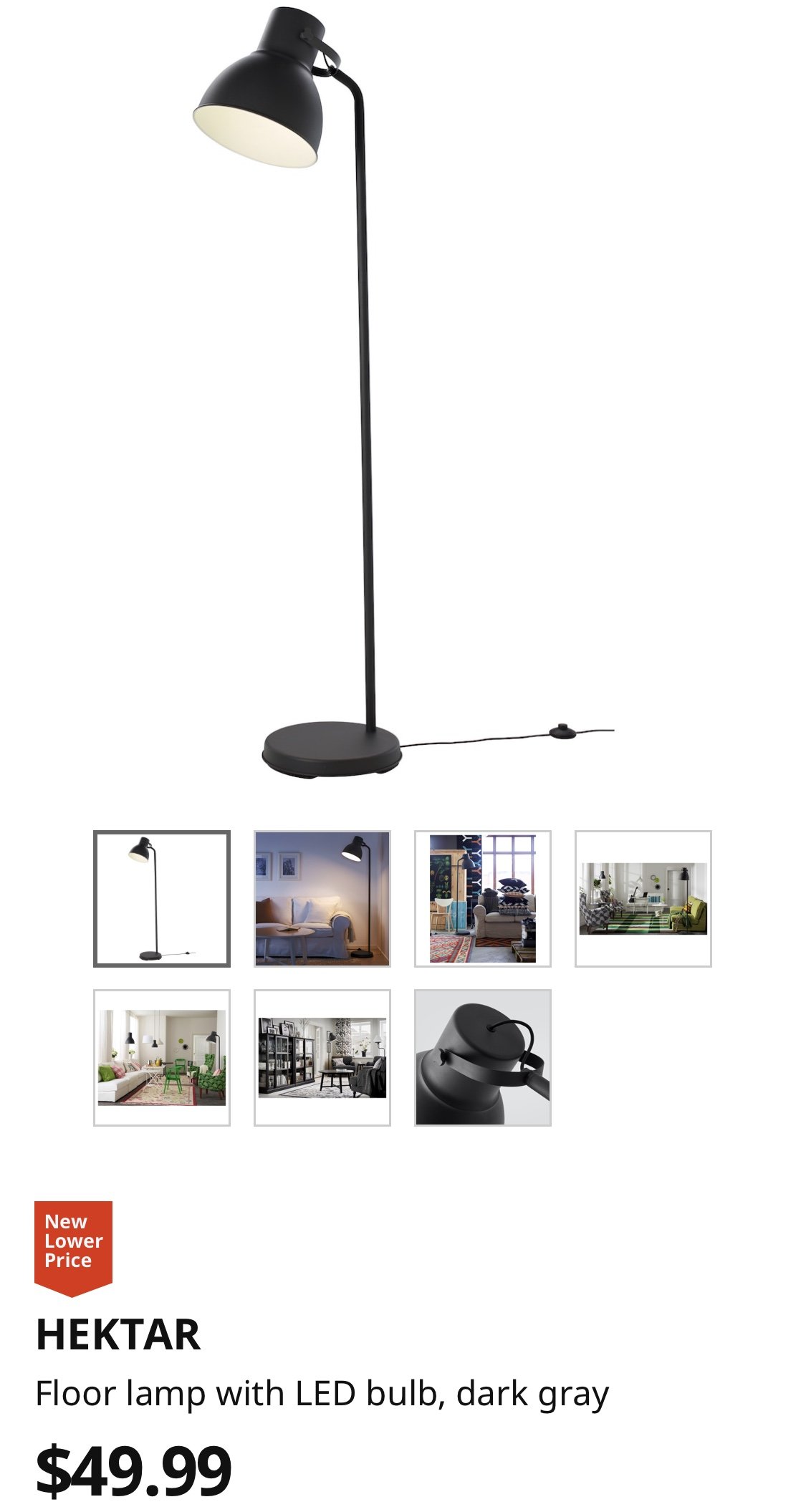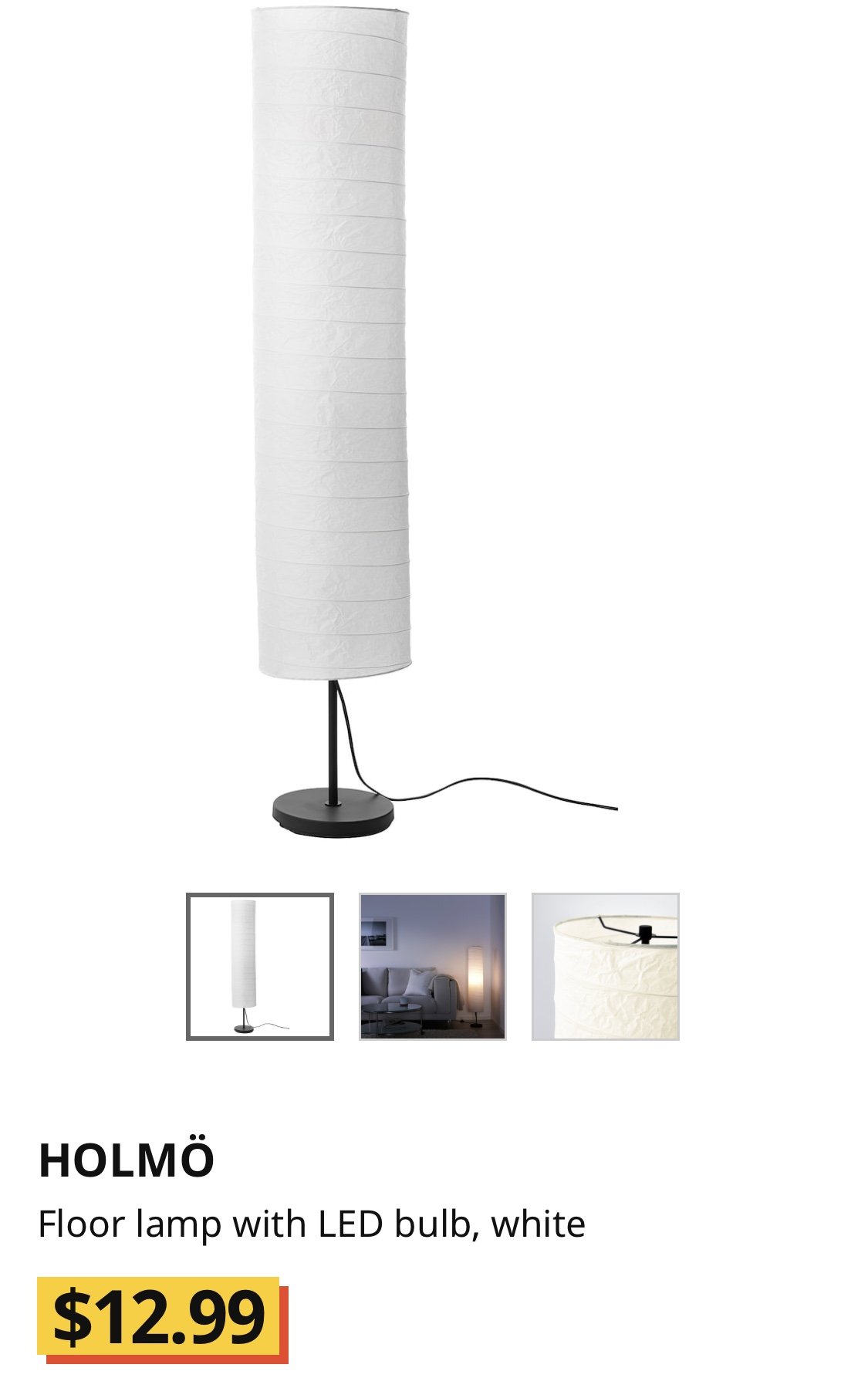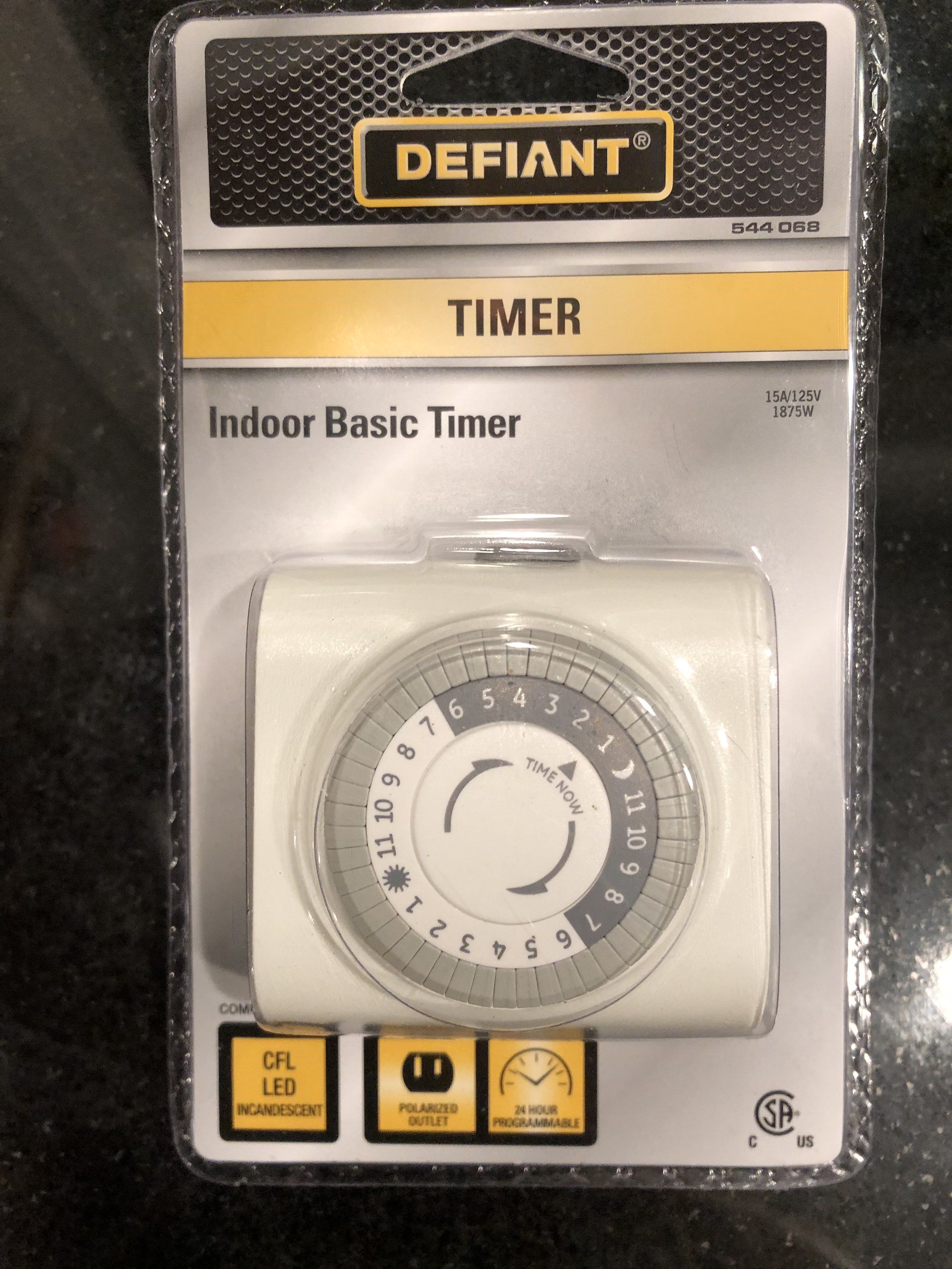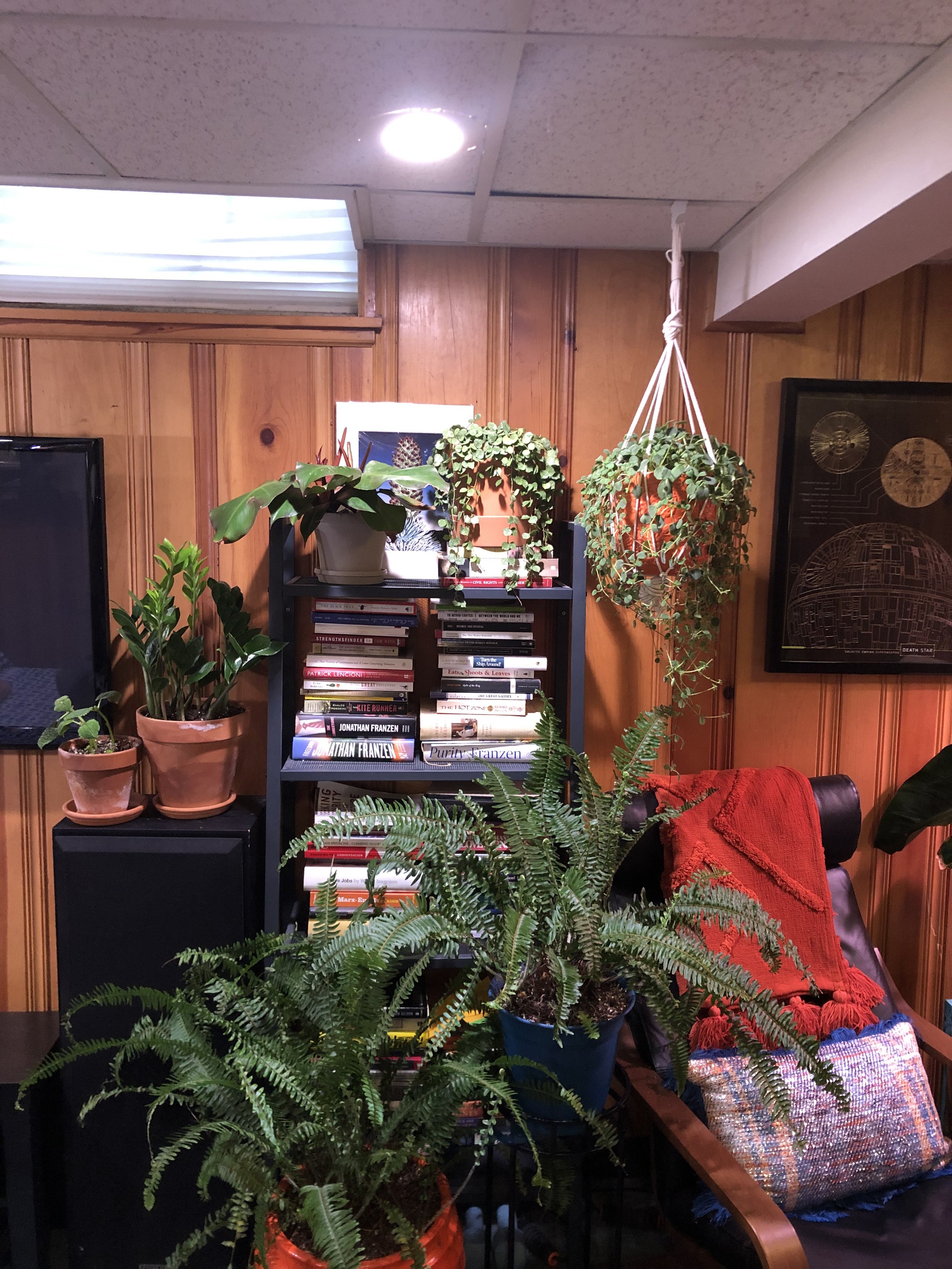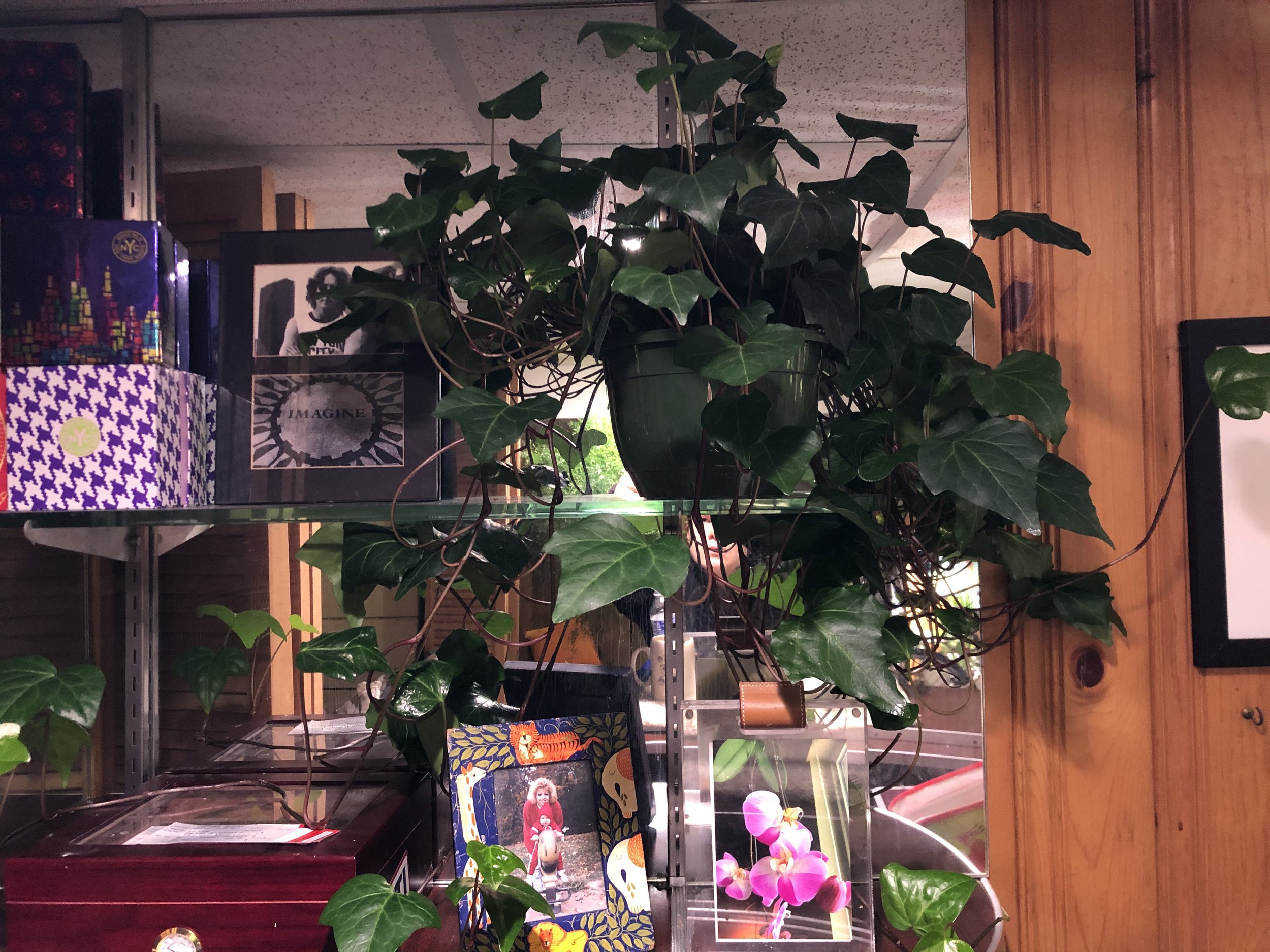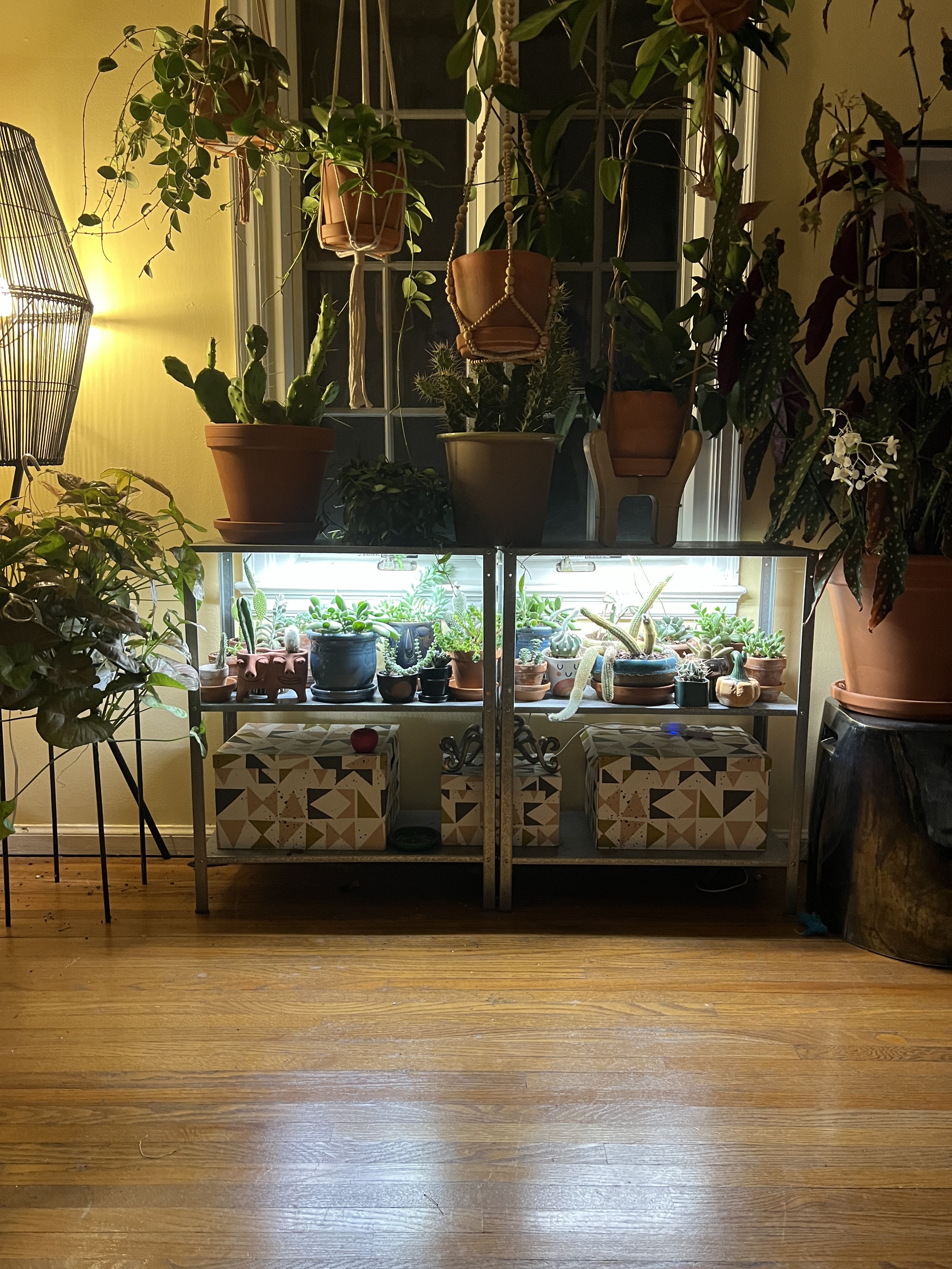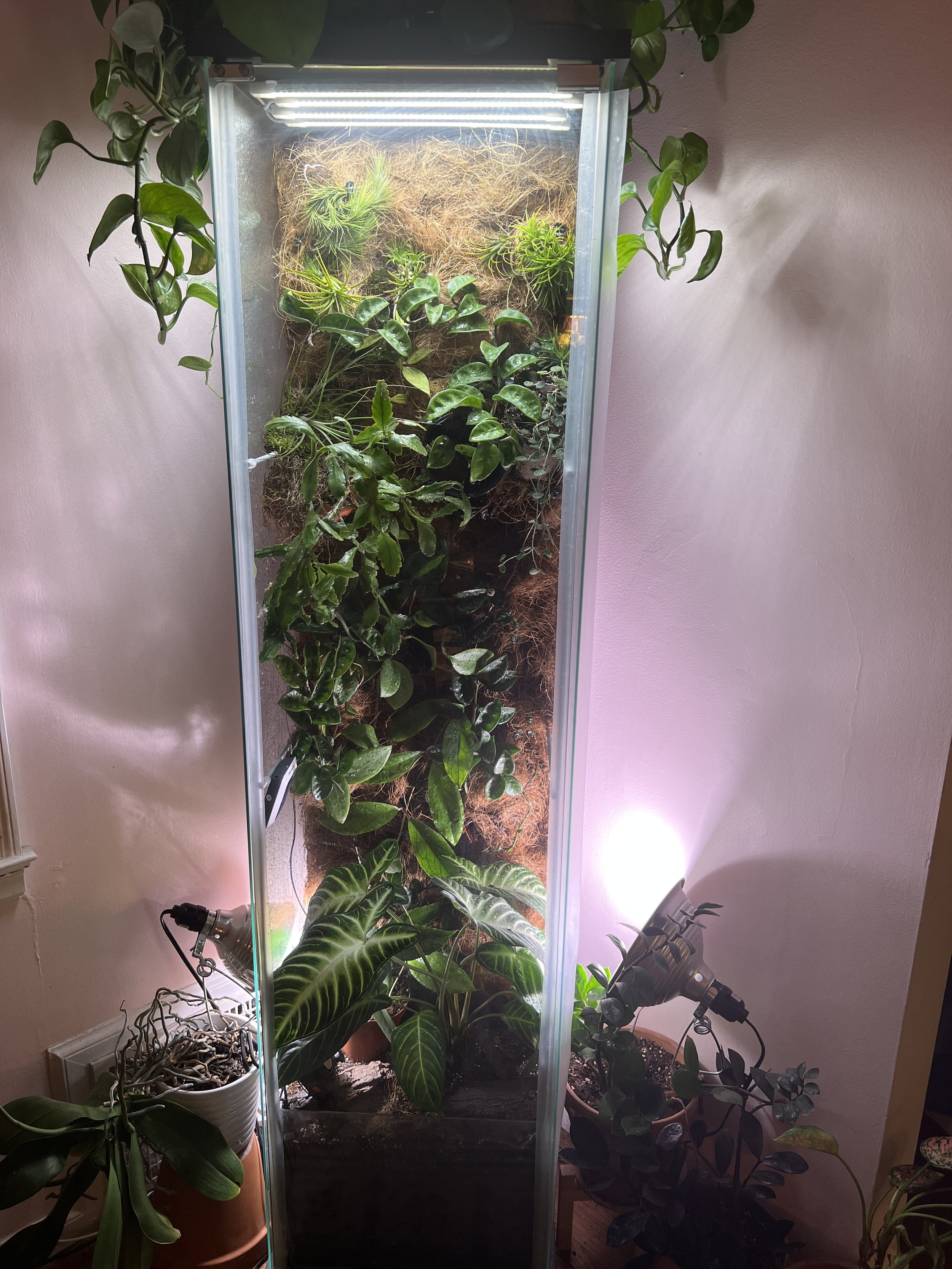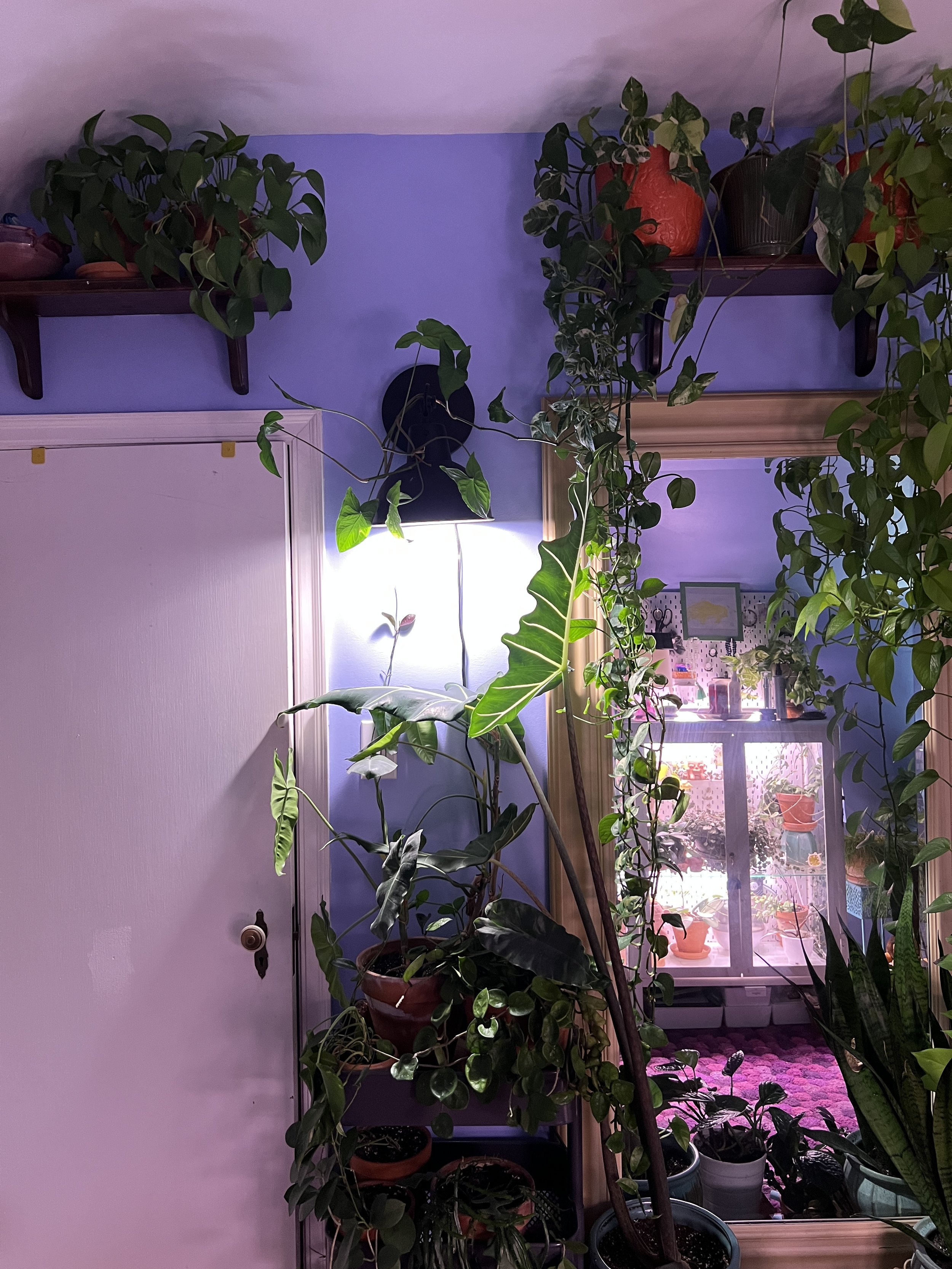How I Keep Plants Alive on Next to No Natural Light
Fall is upon us here in the Midwest! Three years ago, I wrote an article about turning my lightless basement into a plant oasis for the winter. I think this experience is still relevant three years later, BUT, I’ve added a few updates and tidbits of info that I’ve learned from this experiment.
Some things have changed (most notably the prices that I paid in 2020!), but largely this experiment taught me so much that shaped how I feel about grow lights and how I use them today. I still buy the same bulbs if I add a grow light to my space, and that’s my biggest personal testimonial to their efficacy.
Read on to see how it turned out!
I have a weakness for freezing plants. In August 2019, I began to hatch plans to bring all my summer porch plants indoors. The problem was, all the good light was already taken by my existing indoor jungle. The basement however, in all it’s practically windowless glory, was available and screaming for a makeover. “How to make this work?” I wondered. The truth is, I really didn’t expect it to work. It’s very dark, it’s cooler than the rest of the house, and it just isn’t pretty. I decided it best to do this on a major budget because, like I said, I didn’t expect it to work. There is no light down there. For the record, when I say major, I’m talking about maybe a couple hundred bucks. Several months later, these were some of the happiest plants in my jungle. In fact, all of these plants made it through the winter until they either relocated back outdoors for the summer of 2020, or were moved elsewhere in my house.
How it Came Together.
Shed Some Light.
It wouldn’t be possible without the grow lights. My goals were simple. Inexpensive, effective, trustworthy, and most importantly, it was imperative that these lights be livable. I didn’t want to see a difference between everyday living bulbs and my grow bulbs. No red or purple glow for me.
You have many choices when it comes to supplemental light for your plants. Some people use regular LED lights (the plants in my kitchen can vouch for this method), some people use the brightly colored red or blue grow bulbs, and then there are bulbs like the GE BR30 Grow Light, Seeds and Greens. I found the Seeds and Greens to be most in line with my needs, but they do also offer a Flowers and Fruit option with more red spectrum for those who might have that need.
I have purchased a couple of other brands for the sake of comparison. Ikea makes a grow light, and Sunblaster makes another that I own. Both of those are great as well. One reason I come back to GE boils down to price and availability. Another reason I keep coming back to these is that my plants absolutely love them. My plants are growing and thriving in a large room with 4 tiny, lightless windows. Windows which, by the way, remain covered by blinds around the clock. I’m impressed. Another bonus (which, to be fair, is also true for standard LED bulbs, the Ikea grown bulbs and the Sunblaster bulbs that I have) is that these fit in a E26 screw base which means I could use virtually any decorative lamp I want. And, at only 9w, they aren’t a big strain on the electric bill. I did try GE’s PAR38 Seeds and Greens bulb (read: the HUGE one), and it proved too powerful for my needs, but I’d recommend them for anyone needing some very serious oomph.
The Lamps.
The bulbs are nothing without the lamps that bring them to life. All of the same rules applied here, perhaps with one addition. I always love a pop of color.
The lamps are really an opportunity to bring the personality that I hope to breathe into the space. I found a really fun bedspread for $15 in the clearance aisle at HomeGoods, and the colors there were the inspiration for the room overall. When I saw that Ikea’s Tertial lamp comes in blue, I was set on it.
I purchased four Tertials at $9.99 each, so most of the lighting was covered for around $40 plus tax.
The Hektar lamp from Ikea was around for many years before this project, so no there was no extra expense. Price on the lamp at the time I’m writing this is $49.99. I probably wouldn’t have spent that much at the onset of this project, so I’m glad the lamp was already hanging out in the basement. However, it’s had a long and excellent life as a basic floor lamp and I was thrilled to extend it’s life in the role of plant light for this project.
The final lamp I purchased was Ikea’s Holmö for $12.99. The Algerian Ivy that engulfs this lamp is sitting in one of the basement’s four small, ground level windows. The plant receives a little bit of light at soil level from the Western exposed window, and this lamp provides light to the “arms” of the ivy. I haven’t seen the Holmö available at Ikea in a while, so I’ve been experimenting with replacements for the future. Stay tuned.
They Say Timing is Everything.
In this case, we’re not just talking about the timers that are programmed to give the plants 12-14 hours of light per day. It’s also when and how I water the plants that live in these very consistent and controlled conditions.
I have four of these Defiant timers in my basement. In retrospect, I could have used fewer if I had purchased the timers that can accommodate more than one plug. It’s fine, though, as the only time I think about these is…basically never.
I’ve found that my plants enjoy 12-14 hours of light per day. Right now, I have my lights running approximately 7am to 8pm, but I stagger the lights so it slowly transitions from completely light to completely dark over the span of about an hour and a half.
The timers offer you 30 minute increments, so you can’t set a timer to the specific minute. This works well for me because I like the idea of the light “rising” and “setting” a bit each morning and evening. I love these timers, and they give me the freedom to do whatever I need to do every morning and evening without thinking about running to the basement twenty times.
As far as watering goes, I’m generally not a person who waters on a schedule. I like to check each plant on a regular basis to see exactly where stands in it’s need for water rather than, say, watering every Tuesday. It makes me feel more in touch with my plants and I feel more in control of their wellbeing. With that being said…I have found that these basement plants have very consistent temperature and light conditions, and they actually stick to a pretty regular schedule with watering as well! They’re quite happy to be watered about every 7-10 days, depending on the plant.
Update: March 2020
At 6 months into my experiment, here’s what was happening…
Lights in Action
The basement isn’t the only spot that grow lights come in handy. Sometimes they’re great for a boost of light under a shelf, or in a greenhouse cabinet with carefully controlled conditions. Check out some other fun and useful grow light set-ups that give my houseplants a much appreciated power up!
From left to right:
This succulent shelf is a newer addition to the family. Detolf cabinet modified into an upright greenhouse/terrarium. Rudsta Tall cabinet. Wall mounted light for plants living in a bedroom area (Fabrikör short cabinet shown through mirror).
The End
Please share how you use grow lights in your space! Let’s chat in the comments or on Instagram!


